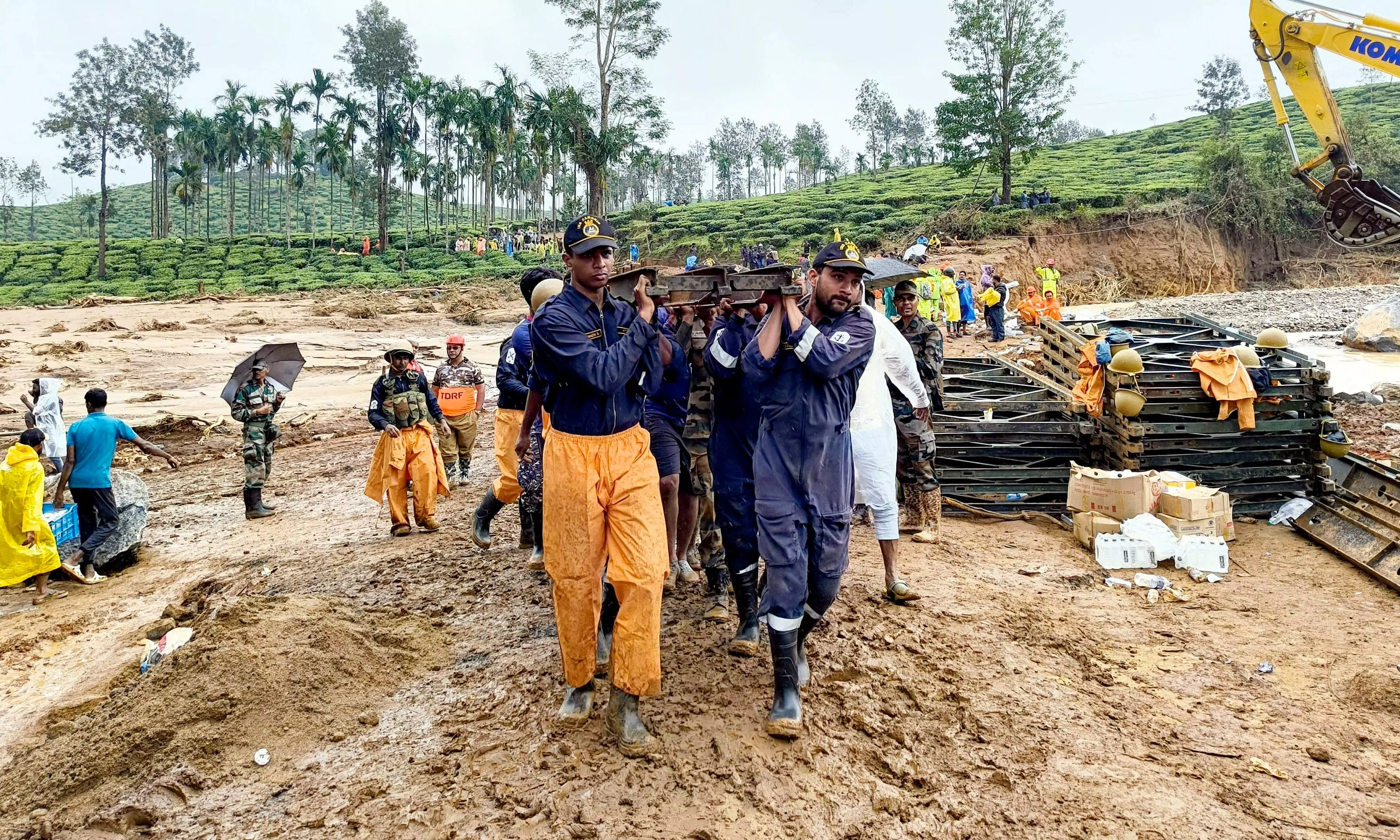
Wayanad: Community burials with multifaith rituals for unidentified bodies
Marked burial sites at community burial ground will allow relatives to identify where their loved ones are resting once the DNA tests yield any positive results

Abdul Manaf travelled all the way from Malappuram district to the Meppadi Community Health Centre in Wayanad to identify his uncle’s body. The uncle and his family had gone missing in a landslide, and friends informed Manaf that his uncle’s body had been recovered from the Chaliyar River at Nilambur. Manaf even had a video clip of the body being recovered, and his family members recognized his uncle’s shirt. However, after a full day of searching, he couldn’t locate the body in any of the hospitals where the bodies were being kept.
“I’ve been searching since morning, covering all the spots — Nilambur, Meppadi, and everywhere else. Now, I suspect someone else might have claimed the body, thinking it was their loved one. From the picture, it’s clear that it was my uncle; my mother identified him too. But since the face was unrecognizable, someone else might have mistakenly claimed it,” said Manaf.
Unidentified bodies and body parts
Abdul Manaf is not the only person struggling to identify or claim the body of a loved one. At 2 pm on Saturday (August 3), there were still 74 unidentified bodies and 119 body parts in a temporary morgue set up in Meppadi.
“When we refer to dead bodies, we’re not always talking about complete human bodies; many are just body parts. If the torso is intact, it’s considered a body; otherwise, it’s classified as a body part. We’ve recovered not only limbs but also internal organs from the river, some of which were found nearly 60 km downstream,” said a paramedical volunteer at the morgue.
SOP issued by government
The government has issued a standard operating procedure (SOP) for the burial of unidentified bodies and body parts, as the medical team has advised that preserving them beyond 72 hours after recovery is not advisable.
According to the SOP issued by the Kerala State Disaster Management Authority, unidentified bodies are assigned an identification number, and both the inquest and post-mortem are conducted according to procedure. The police document the body and any associated materials through photography and videography and take identification measures such as DNA sampling or dental records. This identification number is clearly marked on all samples and records. The police are also responsible for notifying the local self-government (LSG), which in this case is the Meppadi Panchayat, for the identification of the bodies.
Burial only permitted method of disposal
If a body cannot be identified within 72 hours, it will be handed over to the district administration for burial under the supervision of the relevant LSG. If the body is decomposing and requires immediate burial, it will be released without delay. The government has mandated that burial is the only permitted method of disposal, with the identification number clearly marked at the burial site. The burial must be carried out in the presence of panchayat or municipality officials, and the district administration is responsible for maintaining thorough burial records.
For bodies that are identified but unclaimed, and in cases where identification is contested, the same procedure will be followed, ensuring thorough documentation and identification efforts. Body parts are handled similarly, with separate burial locations assigned for each part. All costs are covered by the State Disaster Response Fund.
“The last rites for unclaimed or unidentified bodies are quite complex. Muslims are religiously prohibited from cremation; so, they bury their dead after prayers in designated burial grounds near mosques. Christians do the same in church cemeteries, while Hindus have their own customs and rituals. The tribal communities also follow entirely different practices. This is why the government has decided to opt for burial, ensuring that rituals and prayers from all faiths are offered for each unidentified body,” explained T Balakrishnan, a volunteer from North Wayanad who is helping the families perform the last rites for the victims of the disaster.
Burials across eight panchayats
DNA samples have been collected from relatives for around 150 bodies, but waiting for the results isn’t an option, according to the medical officers on the ground. The marked burial sites at the community burial ground will allow relatives to identify where their loved ones are resting once the DNA tests yield any positive results.
According to chief minister Pinarayi Vijayan, 67 bodies were waiting for community burial on Saturday. Three unidentified bodies, recovered from Mundakkai, were buried in the morning at the Kalpetta public cemetery, following the government’s guidelines. After performing the prayers and rituals according to various religious customs, the bodies were laid to rest.
Facilities for the burials have been arranged across the eight panchayats of Kalpetta Municipality, Vythiri, Muttil, Kaniyambetta, Padinjarathara, Thondernad, Edavaka, and Mullankolly.

